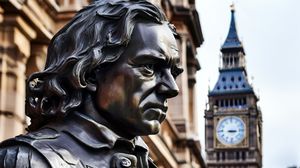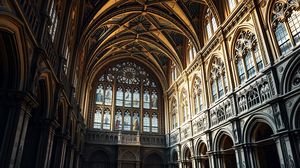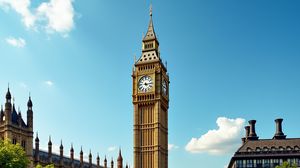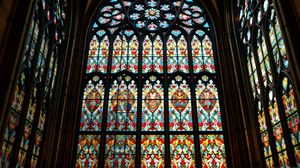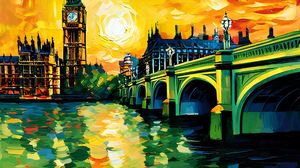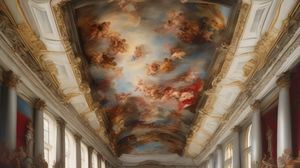
Westminster Hall is a magnificent architectural wonder located within the historic Houses of Parliament in London. This soaring structure is renowned for its immense and exquisite hammer-beam roof, which is the largest medieval timber roof in Northern Europe. Its rich history and architectural grandeur make Westminster Hall an essential visit for anyone exploring the rich heritage of the United Kingdom.
Originally constructed in 1097 under the direction of King William II, Westminster Hall is one of the few surviving parts of the ancient Palace of Westminster. It has played a crucial role in British history and has witnessed many significant events, including coronation banquets, and state trials, such as those of King Charles I in 1649 and Guy Fawkes and his co-conspirators in the Gunpowder Plot of 1605.
The hall's breathtaking roof was commissioned by Richard II in 1393, a marvel of medieval engineering that remains largely unaltered from its original design. The exquisite craftsmanship and sheer scale of this structure continue to captivate visitors today. It's often overlooked, but each of the intricate carvings on the roof beams serves both an aesthetic and structural function, symbolizing the pinnacle of medieval English carpentry.
Westminster Hall has served as the location for the historic Lying-in-State ceremonies of several British monarchs and prime ministers. These solemn occasions have allowed the public to pay their respects to the likes of Sir Winston Churchill, Queen Elizabeth The Queen Mother, and more recently, Queen Elizabeth II, bringing the nation's history to life in a deeply personal way.
In addition to its historical significance, Westminster Hall also hosts a variety of state events and ceremonial occasions. Its vast and open floor space can accommodate large gatherings, offering a unique insight into the pomp and ceremony associated with British state functions. The hall is not a regular tourist stop but serves as an extraordinary backdrop for these significant occasions, garnering worldwide attention during such events.
One curious architectural detail is the presence of tiny 'bosses' on the ceiling, many of which depict religious and mythological figures. These elaborate carvings are often largely unnoticed by visitors but add an unexpected layer of intricate detail to the hall's magnificent ceiling.
Westminster Hall's walls have absorbed centuries of British history, making it a silent witness to the evolving political landscape of the nation. Perhaps its sturdiness and timeless beauty are metaphors for the enduring stability and resilience of the constitutional monarchy that it has overseen over the generations.

Making the Most of Your Visit:
While you're marveling at the huge hammer-beam roof, look closely at those tiny carvings up there, called bosses – they're easy to miss but some depict fascinating historical and mythological figures.
If you're into history, don't miss the plaques around the hall – they tell of some pretty remarkable moments and figures who've passed through here, like King Charles I's trial right here in 1649.
Visit early in the morning if you can; that's when it's less crowded, allowing you to soak in the atmosphere of this storied hall at a more leisurely pace.
Look out for the spot where Queen Elizabeth II lay in state. It's not always marked, but guides sometimes indicate where it was, and pondering the weight of history there is truly something else.
If there's an exhibit on – which happens occasionally – make sure to check it out. They often include rare artifacts and documents that aren't on display anywhere else.

Visiting Times & Costs:
Westminster Hall is generally not open to the public as a standalone attraction since it is part of the working Houses of Parliament. Access is typically available as part of the guided tours of the Houses of Parliament. These tours often run on Saturdays and on weekdays during parliamentary recesses. Visitors should check specific tour times and availability in advance.
The cost of entry to Westminster Hall is included in the ticket price for the Houses of Parliament tours, which vary depending on the type of visit (guided, self-guided audio tour, etc.). It's advisable to book tickets in advance as slots can fill up quickly, especially during peak tourist seasons.
For those interested in accessibility, Westminster Hall is generally accessible to visitors with disabilities. There are provisions for wheelchair users, and assistance can be arranged in advance for those requiring it. Visitors are encouraged to notify staff of any special requirements when booking or prior to arrival to ensure a smooth visit.
Note that special events or ceremonies may occasionally limit public access to Westminster Hall, so it's wise to verify the hall's availability on your intended date of visit.

Address & Map:

Nearby:
